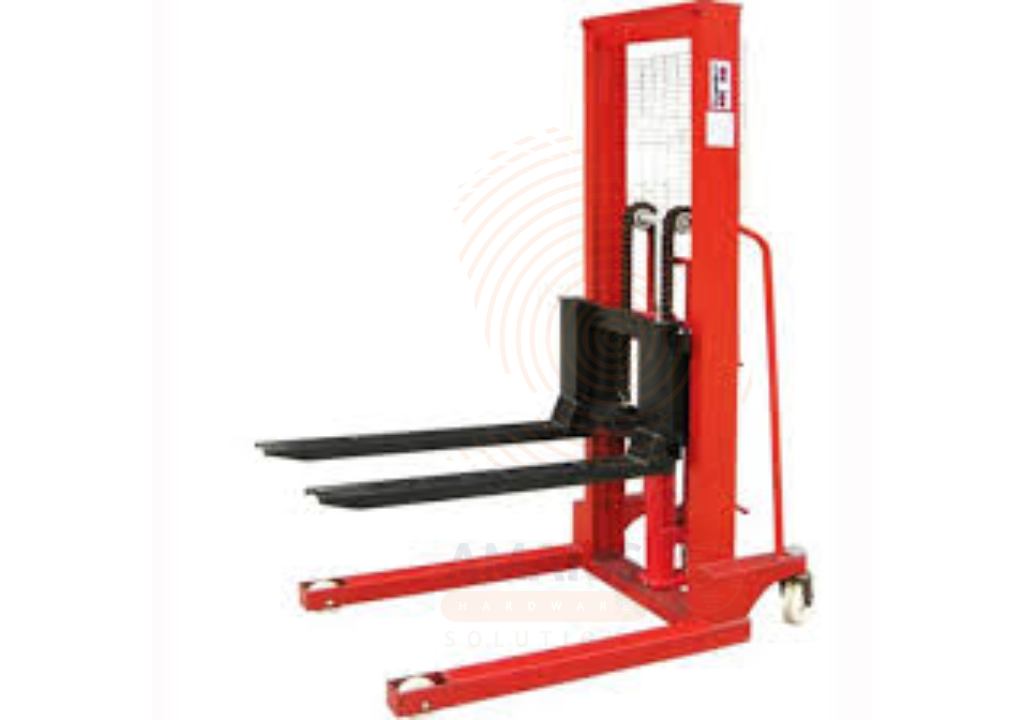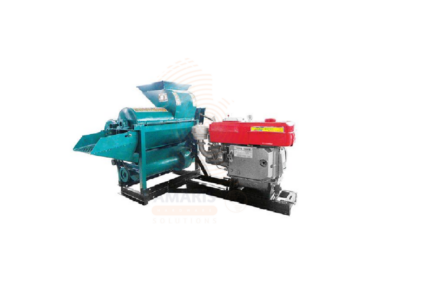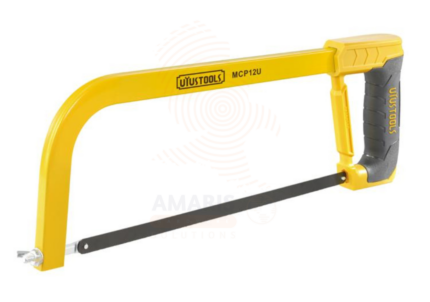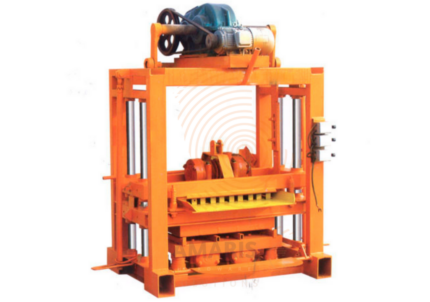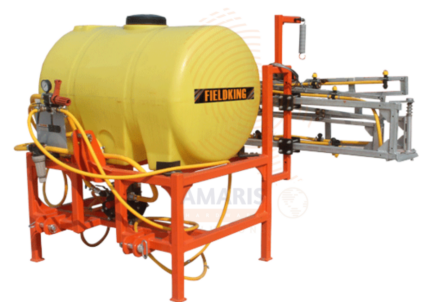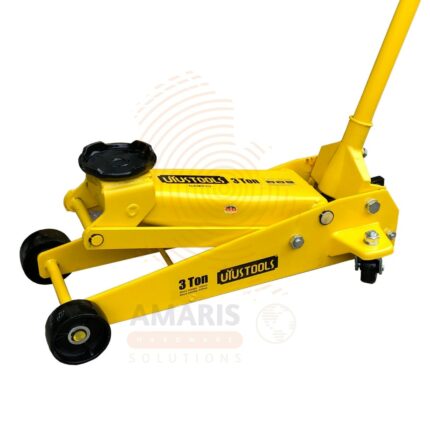Manual Forklift
WhatsApp Order
A Manual Forklift is a non-motorized material handling device used to lift, transport, and position pallets and heavy loads over short distances. Operated by manual hydraulic pumping and steering, it is an efficient solution for warehouses, workshops, retail storage areas, and small-scale industrial operations. Unlike powered forklifts, manual forklifts require no electricity or fuel, making them cost-effective, low-maintenance, and ideal for indoor use. They typically feature adjustable forks, a hydraulic lift system, and sturdy wheels for maneuverability. Manual forklifts are commonly used where compact size, quiet operation, and precise handling are required in confined or controlled environments.
Description
Table of Contents
ToggleManual Forklift Uses
-
Pallet Handling
o Lifts and transports palletized goods in warehouses, loading bays, and storage rooms.
o Useful for stocking, picking, or moving materials. -
Warehouse and Storage Operations
o Moves inventory between shelves, storage racks, or packing areas.
o Enhances workflow without the need for motorized equipment. -
Loading and Unloading
o Assists in manually unloading trucks or loading goods onto delivery vehicles.
o Ideal for low-height dock operations. -
Retail and Backroom Use
o Transports stock and materials in retail backrooms and storerooms.
o Quiet and safe for use near customers. -
Workshops and Production Floors
o Moves heavy tools, components, or raw materials between workstations.
o Supports lean manufacturing environments. -
Tight-Space Material Transport
o Operates effectively in narrow aisles and confined spaces where motorized forklifts can’t fit.
o Great for compact storage systems. -
Temporary or Mobile Use
o Easily transported between job sites due to its lightweight design.
o Requires no power source, making it usable in remote or temporary locations. -
Construction Site Material Handling
o Transports construction materials and equipment on flat, stable surfaces.
o Helps with organizing on-site supplies. -
Low-Volume Operations
o Cost-effective solution for businesses with occasional or light-duty lifting needs.
o Requires minimal training and upkeep.
SAFETY HANDLING PRECAUTIONS
Safety Precautions
-
Inspect Before Use
o Check for hydraulic leaks, damaged forks, worn wheels, and loose components.
o Test lifting and lowering functions before operation. -
Use Appropriate PPE
o Wear steel-toe boots to protect feet from dropped loads.
o Use gloves to improve grip and reduce vibration exposure. -
Load Safely
o Never exceed the rated load capacity.
o Center the load evenly across both forks to prevent tipping. -
Ensure Stable Ground
o Operate only on flat, solid surfaces to avoid instability.
o Avoid slopes, uneven ground, or wet/slippery floors. -
Correct Handling Technique
o Push rather than pull whenever possible for better control.
o Keep both hands on the handle and walk at a controlled pace. -
Secure the Load
o Confirm that the load is stable and will not shift during transport.
o Use straps or containment if necessary. -
Watch for Obstacles
o Keep the path clear of debris, cords, or other obstructions.
o Use mirrors or spotters in blind corners or crowded spaces. -
Parking and Storage
o Lower forks completely when not in use to prevent tripping hazards.
o Do not leave the forklift unattended in walkways or exits. -
Training and Awareness
o Only trained personnel should operate manual forklifts.
o Review handling procedures and safety protocols regularly.
Related products
Block Making Machine
A Block Making Machine is a specialized construction equipment designed to produce high-quality concrete blocks, bricks, and pavers used in building and infrastructure projects. It automates the process of mixing, molding, compacting, and curing concrete materials into consistent, uniform blocks of various sizes and shapes. These machines can be manual, semi-automatic, or fully automatic, depending on their level of automation and production capacity. They are widely used in commercial, industrial, and residential construction projects for producing large volumes of concrete masonry units efficiently.
Boom Sprayer
A Boom Sprayer is an agricultural implement designed to apply liquids such as herbicides, pesticides, fertilizers, and water evenly over large crop areas. It features a horizontal boom equipped with multiple nozzles spaced at intervals, allowing for wide coverage and uniform spray distribution. Boom sprayers can be mounted on tractors, pulled behind as trailers, or be self-propelled units. They enhance the efficiency and accuracy of spraying operations in farming, reducing manual labor and ensuring effective crop protection and nutrition.
Direct Drive Air Compressor
A direct drive air compressor is a type of air compressor where the motor is directly connected to the compressor pump, typically without the use of belts or gears. In this configuration, the motor and the pump share a common shaft, resulting in a more compact and efficient design. Direct drive compressors are known for their simplicity, reduced maintenance requirements, and higher power transmission efficiency compared to belt-driven or gear-driven counterparts. They are commonly used in various applications, including powering pneumatic tools, inflating tires, and providing compressed air for industrial processes.
Floor Jack 3T
A Floor Jack 3T (3-ton) is a heavy-duty hydraulic lifting tool designed to raise vehicles or other heavy objects up to 3 tons (6,000 lbs) off the ground for maintenance, inspection, or repair. It uses a hydraulic cylinder and lever mechanism to provide quick and efficient lifting with minimal physical effort. The low-profile design allows it to fit under most vehicles, including cars, SUVs, and light trucks. Widely used in automotive workshops, garages, and roadside assistance, the Floor Jack 3T ensures safe and stable lifting when used with appropriate support stands.
Hydraulic Bottle Jack
PRODUCT DESCRIPTION
A hydraulic bottle jack is a mechanical device designed for lifting heavy loads by applying force through the use of hydraulic fluid. It typically consists of a vertical cylinder, within which a piston is situated. When force is applied to the piston, it displaces hydraulic fluid, creating pressure and causing the cylinder to lift, thereby raising the load. These jacks are commonly used in automotive and industrial applications for tasks such as lifting vehicles or supporting heavy machinery during maintenance or repairs. The compact design of a hydraulic bottle jack, resembling a bottle in shape, allows for ease of use in confined spaces.
Low Profile Floor Jack
A low-profile floor jack is a type of hydraulic jack designed specifically for vehicles with low ground clearance, such as sports cars or lowered vehicles. It is characterized by its compact and sleek design, allowing it to fit easily under vehicles with minimal ground-to-frame clearance. The low-profile nature of these jacks enables users to access and lift vehicles that may be challenging or impossible to reach with standard floor jacks. These jacks typically have a lower minimum height and a shorter body compared to regular floor jacks, making them suitable for lifting vehicles with limited space between the ground and the vehicle's frame.
Tractor
A tractor is a powerful motorized vehicle designed primarily for pulling or pushing agricultural machinery or trailers. It is a cornerstone of modern farming and land management, offering versatile performance in plowing, tilling, planting, harvesting, and hauling operations. Tractors are equipped with high-torque engines, large rear wheels or tracks, and a variety of attachment points, allowing them to operate over rough terrain and handle a wide range of tasks. They are also used in construction, landscaping, and material transport due to their durability and adaptability.
Wheel Loader
A Wheel Loader is a heavy-duty construction machine designed for loading, transporting, and moving bulk materials such as soil, gravel, sand, and debris. It features a large front-mounted bucket attached to hydraulic arms that allow for lifting, carrying, and dumping materials efficiently. Wheel loaders vary in size from compact models suitable for tight spaces to large machines designed for heavy-duty operations. Their excellent maneuverability, high lifting capacity, and versatility with various attachments such as forks, grapples, and snow plows make them indispensable in construction, mining, agriculture, and waste management industries. These machines help increase productivity by speeding up material handling and site preparation tasks.


 Acrylic Sealants
Acrylic Sealants Construction Adhesives
Construction Adhesives Double-Sided Tape
Double-Sided Tape Duct Tape
Duct Tape Electrical Tape
Electrical Tape Epoxy & Resins
Epoxy & Resins Masking Tape
Masking Tape
 Automotive Wrenches & Socket Sets
Automotive Wrenches & Socket Sets Battery Chargers & Jump Starters
Battery Chargers & Jump Starters Car Jacks & Stands
Car Jacks & Stands Car Wash & Detailing Products
Car Wash & Detailing Products Diagnostic Tools
Diagnostic Tools Tire Inflators
Tire Inflators Vehicle Lighting
Vehicle Lighting Oil & Lubricants
Oil & Lubricants
 Adhesives & Sealants
Adhesives & Sealants Bricks & Blocks
Bricks & Blocks Cement & Concrete
Cement & Concrete Drywall & Plaster
Drywall & Plaster Flooring (Tiles, Wood, Laminate)
Flooring (Tiles, Wood, Laminate) Lumber & Plywood
Lumber & Plywood Paints, Primers & Coatings
Paints, Primers & Coatings Insulation Materials
Insulation Materials Roofing Materials
Roofing Materials
 Circuit Breakers
Circuit Breakers Electrical Cables & Wires
Electrical Cables & Wires Switches & Sockets
Switches & Sockets Fuses & Relays
Fuses & Relays Connectors & Terminals
Connectors & Terminals Electrical Boxes & Panels
Electrical Boxes & Panels Conduit & Fittings
Conduit & Fittings Lighting Fixtures & Bulbs
Lighting Fixtures & Bulbs Extension Cords & Power Strips
Extension Cords & Power Strips
 Anchors
Anchors Bolts
Bolts Clips & Clamps
Clips & Clamps Screws
Screws Nuts
Nuts Washers
Washers Rivets
Rivets Nails
Nails Threaded Rods
Threaded Rods
 Hammers
Hammers Measuring Tools (Tapes, Levels, Calipers)
Measuring Tools (Tapes, Levels, Calipers) Screwdrivers
Screwdrivers Pliers & Cutters
Pliers & Cutters Saws & Blades
Saws & Blades Chisels & Punches
Chisels & Punches Allen Keys & Hex Keys
Allen Keys & Hex Keys Ratchets & Socket Sets
Ratchets & Socket Sets Wrenches & Spanners
Wrenches & Spanners
 Power Tool Accessories (Blades, Bits, Discs)
Power Tool Accessories (Blades, Bits, Discs) Rotary Tools
Rotary Tools Saws (Circular, Jigsaw, Reciprocating)
Saws (Circular, Jigsaw, Reciprocating) Drills & Drivers
Drills & Drivers Grinders & Sanders
Grinders & Sanders Heat Guns
Heat Guns Nail Guns
Nail Guns Impact Wrenches
Impact Wrenches Batteries & Chargers
Batteries & Chargers
 Pipes & Fittings (PVC, Copper, PEX)
Pipes & Fittings (PVC, Copper, PEX) Plumbing Tools
Plumbing Tools Pumps & Motors
Pumps & Motors Sealants & Adhesives for Plumbing
Sealants & Adhesives for Plumbing Valves & Taps
Valves & Taps Water Heaters
Water Heaters Drainage Systems
Drainage Systems Faucets & Fixtures
Faucets & Fixtures Hoses & Tubing
Hoses & Tubing
 Hinges & Latches
Hinges & Latches Hooks & Brackets
Hooks & Brackets Window Hardware
Window Hardware Chains & Cables
Chains & Cables Casters & Wheels
Casters & Wheels Shelving & Storage Systems
Shelving & Storage Systems Door Handles & Locks
Door Handles & Locks Drawer Slides & Cabinet Hardware
Drawer Slides & Cabinet Hardware
 Personal Protective Equipment (PPE)
Personal Protective Equipment (PPE) Respirators & Masks
Respirators & Masks Safety Glasses
Safety Glasses Safes
Safes Security Cameras
Security Cameras Gloves
Gloves Helmets
Helmets Ear Protection
Ear Protection Fire Safety Equipment
Fire Safety Equipment Locks & Padlocks
Locks & Padlocks Motion Sensors & Alarms
Motion Sensors & Alarms
 Garden Fencing
Garden Fencing Garden Furniture Hardware
Garden Furniture Hardware Lawn Mowers
Lawn Mowers Trimmers & Edgers
Trimmers & Edgers Shovels & Spades
Shovels & Spades Rakes & Hoes
Rakes & Hoes Pruning Shears & Loppers
Pruning Shears & Loppers Watering Systems (Hoses, Sprinklers, Nozzles)
Watering Systems (Hoses, Sprinklers, Nozzles)
 Interior Paints
Interior Paints Paint Brushes & Rollers
Paint Brushes & Rollers Paint Strippers & Thinners
Paint Strippers & Thinners Paint Trays & Accessories
Paint Trays & Accessories Exterior Paints
Exterior Paints Spray Paints
Spray Paints Primers & Undercoats
Primers & Undercoats Varnishes & Stains
Varnishes & Stains
 Gaskets & Seals
Gaskets & Seals Hydraulic Fittings
Hydraulic Fittings Industrial Fasteners
Industrial Fasteners Industrial Hoses
Industrial Hoses Lubricants & Greases
Lubricants & Greases Metal Sheets & Bars
Metal Sheets & Bars Bearings & Bushings
Bearings & Bushings Belts & Pulleys
Belts & Pulleys
 HVAC Filters
HVAC Filters Insulation for HVAC
Insulation for HVAC Air Conditioners
Air Conditioners Refrigerants
Refrigerants Ventilation Ducts & Fittings
Ventilation Ducts & Fittings Thermostats & Controllers
Thermostats & Controllers Fans & Blowers
Fans & Blowers
 Pegboards & Hooks
Pegboards & Hooks Shelving Units
Shelving Units Storage Bins & Containers
Storage Bins & Containers Toolboxes & Tool Chests
Toolboxes & Tool Chests Workbenches
Workbenches Drawer Organizers
Drawer Organizers Labeling Supplies
Labeling Supplies
 Welding Accessories (Clamps, Brushes)
Welding Accessories (Clamps, Brushes) Welding Electrodes & Rods
Welding Electrodes & Rods Welding Helmets & Gloves
Welding Helmets & Gloves Welding Machines
Welding Machines Soldering Irons & Stations
Soldering Irons & Stations Flux & Solder Wire
Flux & Solder Wire
 Generator Accessories
Generator Accessories Inverters
Inverters Portable Generators
Portable Generators Power Inverters
Power Inverters Transfer Switches
Transfer Switches Diesel & Gasoline Generators
Diesel & Gasoline Generators
 Transport Equipment: Carts, Dollies, and Hand Trucks
Transport Equipment: Carts, Dollies, and Hand Trucks Storage Solutions: Pallets, Racks, and Containers
Storage Solutions: Pallets, Racks, and Containers Lifting Equipment: Hoists, Cranes, and Jacks
Lifting Equipment: Hoists, Cranes, and Jacks Conveyors and Accessories: Belts and Rollers
Conveyors and Accessories: Belts and Rollers